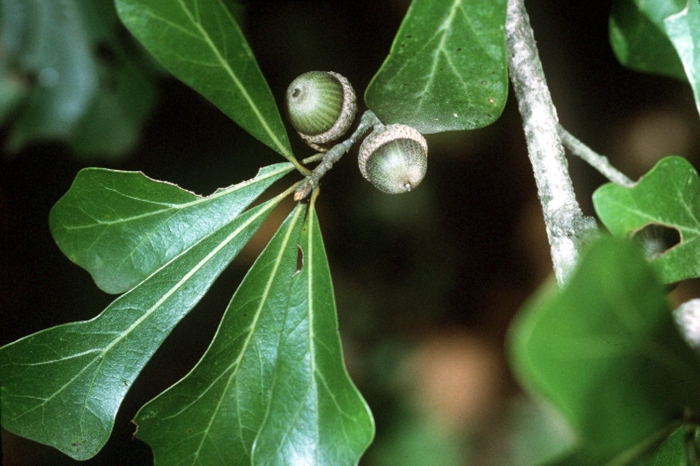Water Oak
(Quercus nigra)
Water Oak (Quercus nigra)
/
/

Public domain
Public domain























































Estimated Native Range
Summary
Water Oak is valued for its rapid growth and adaptability to wet conditions, making it suitable for planting in riparian zones and areas with poor drainage. It is often used in urban settings, despite its shorter lifespan and potential for limb breakage. The tree thrives in full sun, requiring high amounts of water, and prefers soils with medium to fast drainage. While it is not known for a particular disease, it can suffer from typical oak pests and problems such as oak wilt or root rot in poorly drained soils. It is also susceptible to limb breakage during storms due to its fast growth and wood structure.CC BY-SA 4.0
Plant Description
- Plant Type: Tree
- Height: 50-80 feet
- Width: 40-60 feet
- Growth Rate: Rapid
- Flower Color: N/A
- Flowering Season: Spring
- Leaf Retention: Deciduous
Growth Requirements
- Sun: Full Sun, Part Shade
- Water: Medium
- Drainage: Medium, Fast
Common Uses
Bee Garden, Bird Garden, Butterfly Garden, Deer Resistant, Drought Tolerant, Edible*Disclaimer: Easyscape's listed plant edibility is for informational use. Always verify the safety and proper identification of any plant before consumption., Fire Resistant, Rabbit Resistant, Salt Tolerant, Street Planting, Water Garden
Natural Habitat
Lowland forests, swamps, and rivers in the Southeastern USA
Other Names
Common Names: Black Oak, Possum Oak, Spotted Oak, Striped Oak, Pin Oak, Duck Oak, Punk Oak, Orange Oak, Chêne Gris, Vattenek
Scientific Names: , Quercus nigra, Quercus marylandica, Quercus aquatica, Quercus nigra f. tridentifera, Quercus microcarya, Quercus nigra var. tridentata, Quercus nigra var. tridentifera, Quercus aquatica var. hybrida, Quercus nigra var. heterophylla
GBIF Accepted Name: Quercus nigra L.